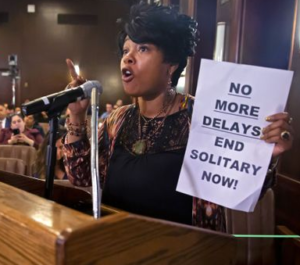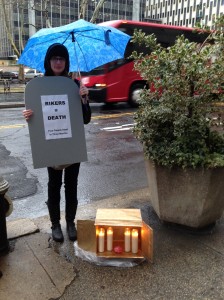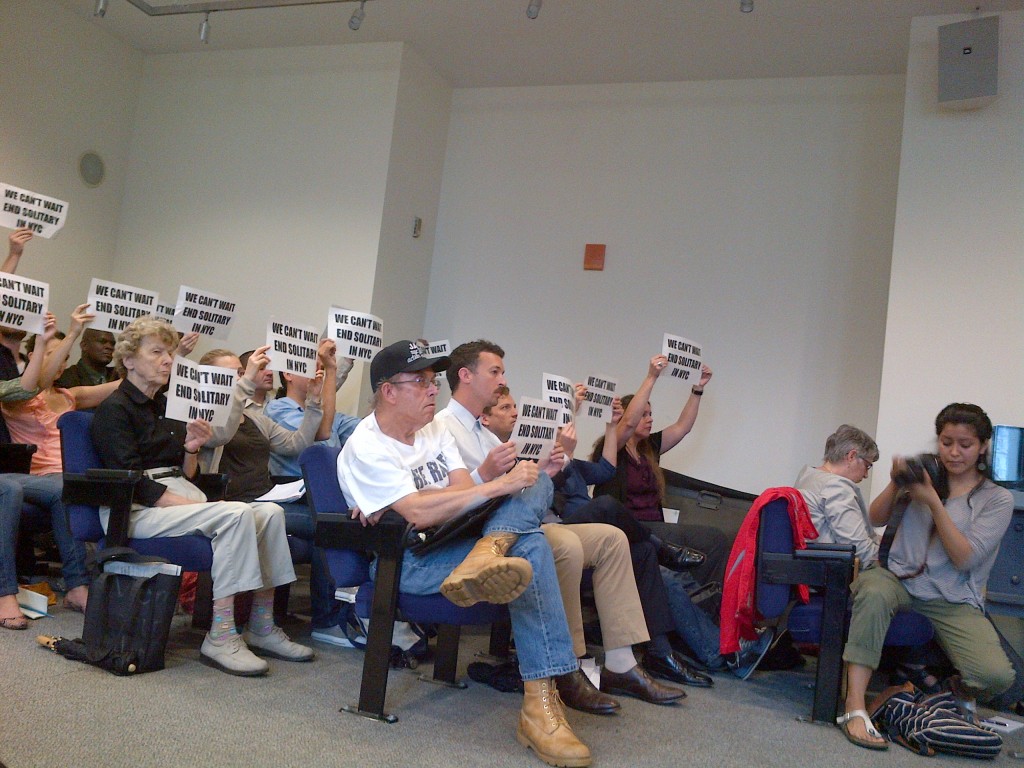 (Photo: Ben Fractenberg/THE CITY) (New York, NY) – The Jails Action Coalition (JAC) in collaboration with the #HALTsolitary Campaign released today their own proposed rules for ending solitary confinement in all New York City jails. Both groups are made up of directly impacted people, community members, legal and mental health experts, and others. These proposed rule changes come one week after releasing a Blueprint for Ending Solitary Confinement in New York City, and in response to the City’s and the Board of Correction’s failure to release their own draft rules to the public last week following interference by the Mayor, including the removal of one of the Board’s leading proponents for restricting solitary.
(Photo: Ben Fractenberg/THE CITY) (New York, NY) – The Jails Action Coalition (JAC) in collaboration with the #HALTsolitary Campaign released today their own proposed rules for ending solitary confinement in all New York City jails. Both groups are made up of directly impacted people, community members, legal and mental health experts, and others. These proposed rule changes come one week after releasing a Blueprint for Ending Solitary Confinement in New York City, and in response to the City’s and the Board of Correction’s failure to release their own draft rules to the public last week following interference by the Mayor, including the removal of one of the Board’s leading proponents for restricting solitary.
Enough is enough; the community can wait no longer. In the wake of Layleen Polanco’s tragic and preventable death, and in recognition of the countless other people who have lost their lives because of solitary in New York City – including Kalief Browder and Bradley Ballard – or suffered devastating psychological and physical harm, community members continue to call on the Mayor, Board of Correction, New York City Council, and Department of Correction to take immediate action to finally and fully end solitary confinement. Today, they have even provided the regulatory language for doing so.
In addition to the ongoing failure of the Board or the Mayor to act to end solitary confinement, this release also was prompted by the city’s expansion of solitary confinement through disturbing variance requests by the Department of Corrections, which has, since, July 2019, been running a new form of solitary, under the name of “Separation Status Housing”. People placed inside these medieval cells have no meaningful human engagement or programs and limited or no access to due process, visits, recreation, religious services, toiletries, paper or pen to communicate with their loved ones, personal support systems or attorneys, or even attending court dates. The BOC reported that two individuals already missed their court dates.
According to JAC and #HALTsolitary, their “proposed rule changes are written to implement the Blueprint’s plan to:
- Ensure that the Board of Correction minimum standards for out-of-cell time of at least 14 hours per day apply to all people in city jails, by removing exceptions to those standards for punitive segregation and Enhanced Supervision Housing (ESH) units;
- Create minimum standards for emergency individual lock-ins and emergency lockdowns;
- End punitive segregation and make ESH and any other alternative units actually about safety, rehabilitation, and prevention of violence;
- Adopt specific mechanisms and time limits for getting out of ESH and any other alternatives units; and
- Dramatically limit use of restraints with a strong presumption against their use.”
Click here to read all of the proposed rule changes for solitary confinement.

 The Correction Officers’ Benevolent Association (COBA) pressed particularly hard for the increase in punitive bed space, attributing a spike in attacks on COs to the backlog of prisoners waiting to serve time in “the Bing,” as solitary confinement on Rikers is called. At a November 2011 City Council meeting, Schriro was grilled by City Council member Elizabeth Crowley about the problem. Schriro re
The Correction Officers’ Benevolent Association (COBA) pressed particularly hard for the increase in punitive bed space, attributing a spike in attacks on COs to the backlog of prisoners waiting to serve time in “the Bing,” as solitary confinement on Rikers is called. At a November 2011 City Council meeting, Schriro was grilled by City Council member Elizabeth Crowley about the problem. Schriro re

Follow the #HALTsolitary Campaign